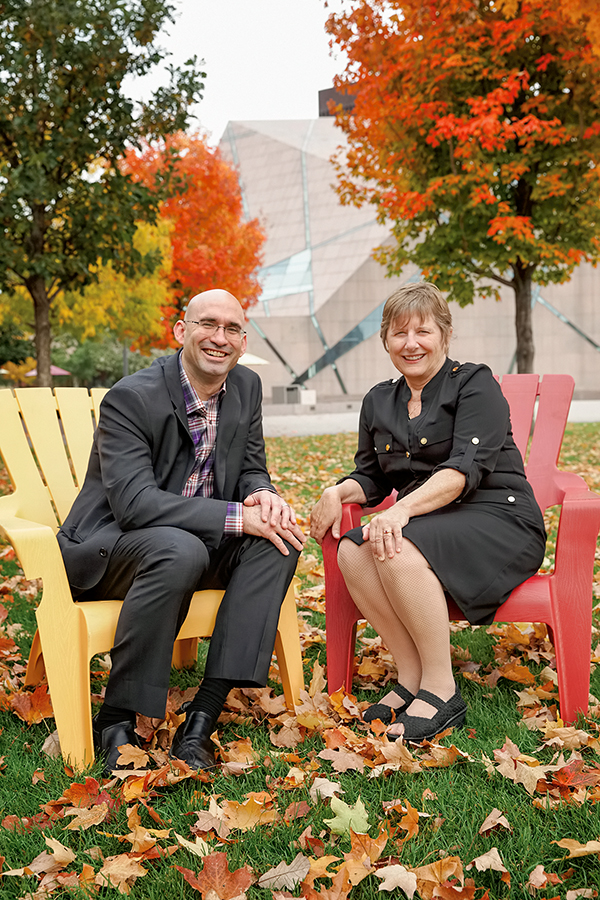It was a common problem. Grant-supported research finds an effective solution to a challenge, and then the funding ends.
In summer 2014, associate professor Lori Helman was wrapping up the work of a faculty team that developed a reading intervention framework for elementary-aged children called Path to Reading Excellence in School Sites (PRESS—see companion story “A new path for PRESS”). Three years of funding from the Target Corporation supported graduate students working in six metro schools, and the PRESS intervention had proven successful.
With the end of the Target funding, Helman and CEHD chief of operations Ryan Warren discussed options for continuing the important work. It was exactly the type of challenge that could be met by what would become a new college unit, Educational Technology Innovations (ETI).
“The idea of ETI began to take shape as an effort that would seek to employ highly skilled software developers and connect them with our content creators across the college,” says Warren. “The goal was to reach audiences with our knowledge that we otherwise would not reach by creating digital environments that are both affordable and sustainable.”

The idea evolved over the coming months. But how would the college find the seed funding to launch it?
The answer came in early 2015 when the college sold the Flipgrid technology, created in CEHD, in a deal that ultimately led to a Minneapolis company.
“At that point, we really saw two options,” says Warren. “We could either treat that start-up as an anomaly that would never happen again, or we could use the proceeds to invest in the people and process to turn external sales and commercialization activity into an expectation of the college.”
Dean Quam was convinced that the college could do more, and ETI was created in August 2015.
Building on success
When Flipgrid was sold, the employees working on it left with the new company. Heading the new endeavor and confronted with complete turnover, Warren hired local technology entrepreneur John Behr to serve as ETI’s chief technology officer. He also brought in CEHD development officer David Hoffman, who had worked with many college faculty members to imagine the possibilities of an ETI-like effort.
Potential projects began to take shape. Two developers were hired to advance three projects with promise to generate external sales revenue for the college.
One project aims to develop a tool for athletes developed by professor Don Dengel and graduate student Tyler Bosch in the School of Kinesiology as an outgrowth of their research using new technology.
“We knew we had created something special, but to make it a viable product we knew we needed help,” says Dengel. “That is where ETI came in. They’ve provided us with the software developers and management team to take our idea to the next level. We have been able to work side by side with them as we have taken the initial research and turned it into a viable product. Without ETI, Tyler and I would in all likelihood still be sitting in my lab wondering where to go next.”
Another project builds on the success of a well-established and tested student engagement intervention model, Check & Connect. Staff in the Institute on Community Integration (ICI) field weekly inquiries about this model designed to promote positive academic, behavioral, and school completion outcomes for students, primarily in middle and high school. But Check & Connect’s student progress data-recording has always been conducted strictly by paper and pencil, which has limited adoption and functionality. Beginning in January 2016, ETI began collaborating with ICI to develop software to support online data collection and reporting.
“The software will allow schools to systematically report on a student’s progress and share this information with the student, the student’s teachers, and parents,” says ICI director David R. Johnson.
But the first product to launch from ETI is Lori Helman’s. The Path to Reading Excellence in School Sites intervention became available this fall. The PRESS online environment provides intervention content, learning environments, demonstration videos, and community forums.
“ETI made it possible for us to envision, design, and bring to life a participatory website,” says Helman. “Educators will be able to use it to access the knowledge developed through PRESS, be guided to implement it in their schools, and contribute to its continued advancement.”
In addition to the three projects advanced this last year, many more were considered, identified, or staged.
“The demand in year one has validated the idea,” says Warren. “As we demonstrate more of what it is we can do, the future is limitless for what we will do.”
Learn more about ETI.
Read more about PRESS’s new online environment in “A new path for PRESS.”
Photo of Warren and Helman by Greg Helgeson | Winter 2017
